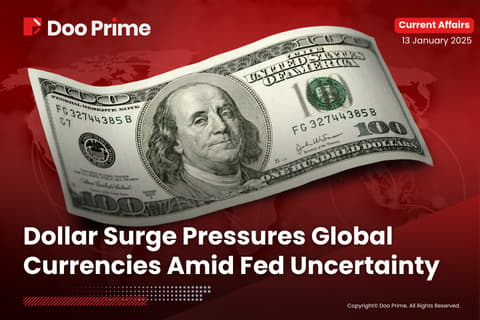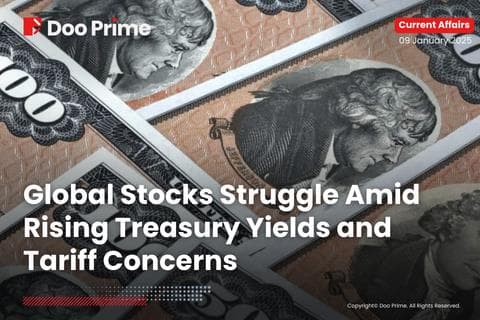WORLDWIDE: HEADLINES
Nvidia unveils new technology to speed up AI, launches new supercomputer

Nvidia Corp (NVDA.O) on Tuesday announced new chips and technologies that it said will boost the computing speed of increasingly complicated artificial intelligence algorithms, stepping up competition against rival chipmakers vying for lucrative data center business.
The company provided details of new graphic chips (GPU) that will be at the core of AI infrastructure, releasing the H100 chip and a new processor chip called the Grace CPU Superchip, based on British chip firm Arm Ltd’s technology. It’s the first Arm-based chip from Nvidia to be unveiled since its deal to buy Arm fell apart last month.
Nvidia also announced its new supercomputer “Eos”, which it said will be the world’s fastest AI system when it begins operation later this year.
“Data centers are becoming AI factories – processing and refining mountains of data to produce intelligence,” said Nvidia Chief Executive Officer Jensen Huang at Nvidia’s AI developer conference online, calling the H100 chip the “engine” of AI infrastructure.
Nvidia said the new technologies together will help reduce computing times from weeks to days for some work involving training AI models.
Companies have been using AI and machine learning for a multitude of things – from making recommendations for the next video to watch on TVs and cell phones – to new drug discovery.
“It’s clear from the latest announcements that Nvidia is becoming a more significant threat to Intel and AMD in the data center and cloud computing markets,” said Bob O’Donnell chief analyst at TECHnalysis Research.
Nvidia shares closed down 0.8% at $265.24 on the Nasdaq.
Full coverage: REUTERS
UK inflation hits 30-year high of 6.2% as Sunak readies response

British inflation shot up faster than expected last month to hit a new 30-year high, worsening a historic squeeze on household finances that finance minister Rishi Sunak is under pressure to ease in a budget update later on Wednesday.
The Office for National Statistics said consumer prices rose by 6.2% year-on-year in February after a 5.5% rise in January, its highest rate since March 1992.
Britain now has the second-highest annual inflation rate among Group of Seven countries, behind only the United States as global commodity and energy prices soar, exacerbated by Russia’s invasion of Ukraine.
The median forecast in a Reuters poll of economists had pointed to a reading of 5.9% and only three of the 39 respondents had expected such a strong reading.
The ONS highlighted household energy bills – up almost 25% on a year ago – and petrol as the biggest drivers of February’s price jump.
In a blow to poorer households, the ONS said food prices were rising across the board, unlike in normal times when some prices typically go up and others fall.
Sunak will aim to show at 1230 GMT that he is helping Britons through the worst cost-of-living squeeze in decades.
Options include a fuel duty cut, pushing up the threshold at which people start to pay into the social security system and ensuring welfare payments keep up with inflation.
Yael Selfin, chief economist at KPMG UK, said the figures would also put pressure on the Bank of England to keep on raising interest rates, but she said it was still likely that price growth would peak before long.
“Provided inflation expectations can be managed and global commodity prices stabilise by next year, we should see inflation returning to the Bank of England’s 2% target by mid-2024,” Selfin said.
“This may require fewer rate rises than markets currently anticipate.”
Dan Boardman-Weston, chief investment officer at BRI Wealth Management, said raising rates at a time of high household bills and rising taxes could stifle the economic recovery.
“The Bank will need to carefully balance the need to try and tame inflation whilst not tipping the economy into a recession,” he said.
The ONS said consumer prices rose by 0.8% in month-on-month terms, marking the biggest February rise since 2009.
Last week, the BoE raised its forecast for annual inflation to peak above 8% – more than four times its target – during the April-June period. Regulated household energy bills are due to jump by more than half next month.
Core inflation, which excludes the direct impact of food and energy costs, rose to 5.2% from 4.4% – also its highest since March 1992.
Inflation pressure ahead continued to build as manufacturers increased their prices by 10.1%, the biggest annual rise since September 2008 although it was in line with the median Reuters poll forecast.
Full coverage: REUTERS
WORLDWIDE: FINANCE/BUSINESS
Tencent quarterly revenue rises 8%, slowest ever growth

China’s Tencent Holdings (0700.HK) on Wednesday posted a 8% rise in fourth-quarter revenue in its slowest growth since going public in 2004 reflecting heightened regulatory scrutiny and a slowdown in advertising.
The social media and gaming giant said revenue rose to 144.2 billion yuan ($22.63 billion) from 133.7 billion.
That was below an average of 147.6 billion yuan from 17 analysts, Refinitiv Eikon data showed.
Revenue for the full year rose 16%, which was also its slowest ever pace.
It posted a 60% jump in fourth-quarter profit, helped by one-off gains made through deals such as its disposal of most of its stake in JD.com (9618.HK).
A year-and-half-long crackdown by Beijing on tech giants such as Tencent has brought decades of unbridled growth to an end and placed them under new rules governing how they interact with their users and how they conduct mergers and acquisitions.
Regulators have frozen game approvals since August last year, casting a chill over the sector and putting many small gaming studios out of business.
Advertising has also been hit as many industries affected by the regulatory crackdown cut back on spending.
Tencent’s stock has lost more than a third of its value in the past 12 months.
($1 = 6.3729 Chinese yuan renminbi)
Full coverage: REUTERS
Dutch bank ING ends financing for new oil and gas projects

ING Groep NV (INGA.AS) will no longer finance new oil and gas projects, its energy chief said, one of the first major global banks to commit to such a step in the fight against climate change.
The move by the Dutch financial services firm raises pressure on peers to heed a call by the International Energy Agency (IEA) for a halt to funding for new fossil fuel projects to help cap global warming at no more than 1.5 degrees Celsius. read more
Michiel de Haan told Reuters that ING would not finance projects approved after Dec. 31, 2021 but would still fund energy firms, although ING is already phasing down financing to the oil and gas industry and scaling up lending for renewables.
“Decarbonisation of the energy system … is of almost existential importance, but so is affordable and reliable supply of energy,” de Haan said.
“We can make the decision to discontinue our involvement in new greenfields, but we (will) continue our existing involvement in oil and gas across the world because we need to meet those other two targets.”
De Haan said the bank would target a 50% increase in lending for renewable energy by 2025, building on strong growth in 2021, when financing grew 26% to 7.3 billion euros ($8.05 billion).
ING’s plan to reduce funding for existing oil and gas clients and projects is more gradual, with a target to cut it by 12% to about 3.5 billion euros by 2025.
“It’s important to recognise that the IEA also indicates that in the future, oil and gas will be needed,” de Haan said, adding that the bank was seeking to help customers decarbonise their businesses.
Investor pressure on banks to act faster on climate change has increased in the year since the IEA published its report on ending fossil fuel funding.
But many banks have only promised to stop lending in narrow circumstances, such as for drilling in the Arctic. The Ukraine crisis may further hamper the shift, as Europe seeks alternatives to Russian oil and gas.
ShareAction, an organisation pushing for responsible investment, said in a February report that 25 of Europe’s leading banks had provided $55 billion in funding in 2021 for energy companies planning to expand oil and gas production.
It said HSBC (HSBA.L), Barclays and BNP Paribas (BNPP.PA) were among the biggest funders of oil and gas projects in 2021.
($1 = 0.9069 euros)
Full coverage: REUTERS
Oil rises in volatile trade on supply concerns from Russia sanctions

Oil prices rose on Wednesday amid volatile trading on increasing concerns of global supply tightness from sanctions imposed on Russia, the world’s second-largest oil exporter, and on signs that exports from Kazakhstan may be disrupted.
Brent crude futures were up 95 cents, or 0.82%, to $116.43 a barrel at 0816 GMT. Prices earlier rose to as high as $117.70 and at one point fell to a low of $114.45. The contract fell 14 cents in the previous session.
U.S. West Texas Intermediate (WTI) crude futures rose 73 cents, or 0.67%, to $110 a barrel. The contract surged to a high of $111.35 and slipped to a low of $108.38. Prices fell 36 cents on Tuesday.
The market remains on edge over the prospect of further sanctions on Russia, the world’s second-largest crude exporter, after its invasion of Ukraine, actions that Moscow calls a “special operation”.
U.S. President Joe Biden is set to announce more Russian sanctions when he meets with European leaders on Thursday in Brussels, including an emergency meeting of NATO.
Adding to concerns about supply, Russian and Kazakhstan oil exports via the Caspian Pipeline Consortium (CPC) from the Black Sea may fall by up to 1 million barrels per day (bpd), or 1% of global oil production, because of storm-damaged berths, a Russian official said on Tuesday.
“Oil markets are a mess of volatility at the moment,” said Jeffrey Halley, an analyst at brokerage OANDA. “You don’t have to be a genius to know what Russia reducing its flows, or closing it, will do to an already tight market.”
Plunging crude stockpiles in the United States, the world’s biggest oil consumer, also added to the apprehensions around supply.
The latest data from the American Petroleum Institute industry group showed U.S. crude stocks fell by 4.3 million barrels for the week ended March 18, according to market sources, counter to analysts’ forecasts for an increase.
Nine analysts polled by Reuters on average had estimated crude inventories rose by 100,000 barrels in the week to March 18.
Official U.S. inventory data is due from the Energy Information Administration on Wednesday.
Full coverage: REUTERS



